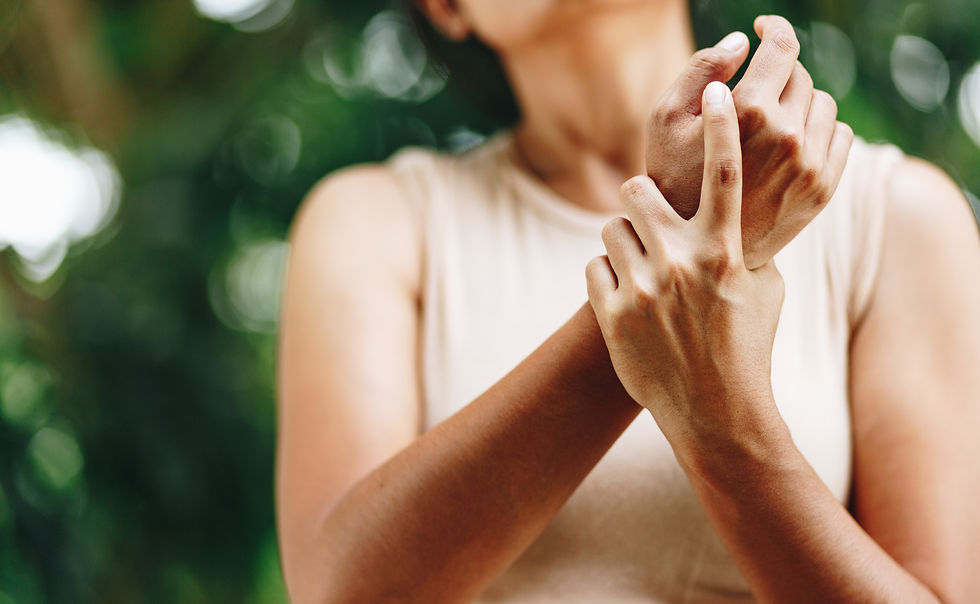Shoulder Health: Maintain It, Improve It
- Clint Brooks
- Sep 21, 2023
- 3 min read
Updated: Sep 22, 2023

What is the Rotator Cuff?
The rotator cuff is a group of 4 muscles in each shoulder (Supraspinatus, Infraspinatus, Subscapularis, and Teres Minor).
Muscle actions:
Supraspinatus: Abduction (moving the arm away from the body)
Infraspinatus: External rotation (rotating the arm outward from the body)
Teres Minor: External rotation
Subscapularis: Internal rotation (rotating the arm inward toward the body)
These muscles work together and function to stabilize the ball-and-socket joint of the shoulder during arm movement. Proper strengthening helps to improve joint mechanics and control throughout movement and exercise, thus reducing injury risk (Cools et al).
The Basics of Safe Lifting to Prevent Shoulder Injuries:
An active shoulder warm-up prior to upper body weight lifting is crucial! This helps rotator cuff muscle activation and mobility prior to loading the joint with resistance exercise (Cools et al).
Quick shoulder warm-up example:
(performed laying on your stomach using an inclined or flat bench)
NOTE: Perform with no resistance or very light resistance (small dumbbell or plate) 2x10 of each.
Main risk factors for shoulder injury:
Rotator cuff muscle weakness
Lack of shoulder mobility
Scapular muscle weakness
Thoracic spine stiffness
See exercises below to address these issues
Shoulder position during pushing/lifting motions:
Keeping the weight close to your body helps to protect the shoulder and reduce mechanical strain on stabilizing muscles.
When performing loaded activities such as bench press, push-ups, overhead press, or rowing, keeping your arms at a diagonal angle to your body reduces anterior shoulder strain
NOTE: Example of good bench press form: Proper Bench Press Technique to Avoid Shoulder Injury
Don’t forget your core!
Studies have shown that integrating core activation into shoulder exercises increases axio-scapular muscle recruitment and reduces demands on the rotator cuff musculature (Richardson et al).
My Shoulder Feels Different During Activity. What Should I Do?
Exercising with mild sensation of strain/fatigue is normal.
This is indicative of stressing the appropriate muscle groups being trained to the point of overload, which is necessary for muscle growth.
Exercising through repetitive, sharp pain during a movement.
This indicative of possible injury or poor form, over-stressing a certain tissue.
At this point, the exercise should be stopped and form or load should be assessed.
If the pain persists or starts to cause progressive muscle weakness in the affected area, reach out to your Physical Therapist at Reserve Health.
Noisy Joints?
The shoulder is a relatively superficial joint with many degrees of mobility in multiple planes.
Noises/sensations such as “pops”, “clicks”, and “clunks” during motion of joints are normal, especially in the shoulder!
If you notice repetitive, sharp pain in the shoulder that is associated with a certain motion or joint noise, it may be time to see Physical Therapy to have it assessed.
NOTE: There are many tendons surrounding this joint that often roll and move over bony prominences during motion, leading to “popping” and “clicking” sounds. This can actually be indicative of a healthy joint with good mobility. As long as these joint sensations are not accompanied by pain that is repetitive with every time the noise happens, it is completely normal.
Example Exercises:
Shoulder and Thoracic Mobility:
Rotator Cuff Stability:
Scapular Strengthening:
----------------------------------------------------------------------------------------------------------------
Source Links:
Cools, A. M., Johansson, F. R., Borms, D., & Maenhout, A. (2015). Prevention of shoulder injuries in overhead athletes: a science-based approach. Brazilian journal of physical therapy, 19(5), 331–339. https://doi.org/10.1590/bjpt-rbf.2014.0109 , https://www.ncbi.nlm.nih.gov/pmc/articles/PMC4647145/
Tahran, Ö., & Yeşilyaprak, S. S. (2020). Effects of Modified Posterior Shoulder Stretching Exercises on Shoulder Mobility, Pain, and Dysfunction in Patients With Subacromial Impingement Syndrome. Sports health, 12(2), 139–148. https://doi.org/10.1177/1941738119900532 , https://pubmed.ncbi.nlm.nih.gov/?term=shoulder+pain+during+exercise&filter=simsearch2.ffrft&filter=simsearch3.fft&filter=years.2014-2023
Richardson, E., Lewis, J. S., Gibson, J., Morgan, C., Halaki, M., Ginn, K., & Yeowell, G. (2020). Role of the kinetic chain in shoulder rehabilitation: does incorporating the trunk and lower limb into shoulder exercise regimes influence shoulder muscle recruitment patterns? Systematic review of electromyography studies. BMJ open sport & exercise medicine, 6(1), e000683. https://doi.org/10.1136/bmjsem-2019-000683 , https://theprehabguys.com/bulletproof-shoulders/, https://www.melbournesportsphysiotherapy.com.au/blog-articles/2021/what-causes-shoulder-pain-when-lifting-weights-and-how-to-fix-it-1





Comments